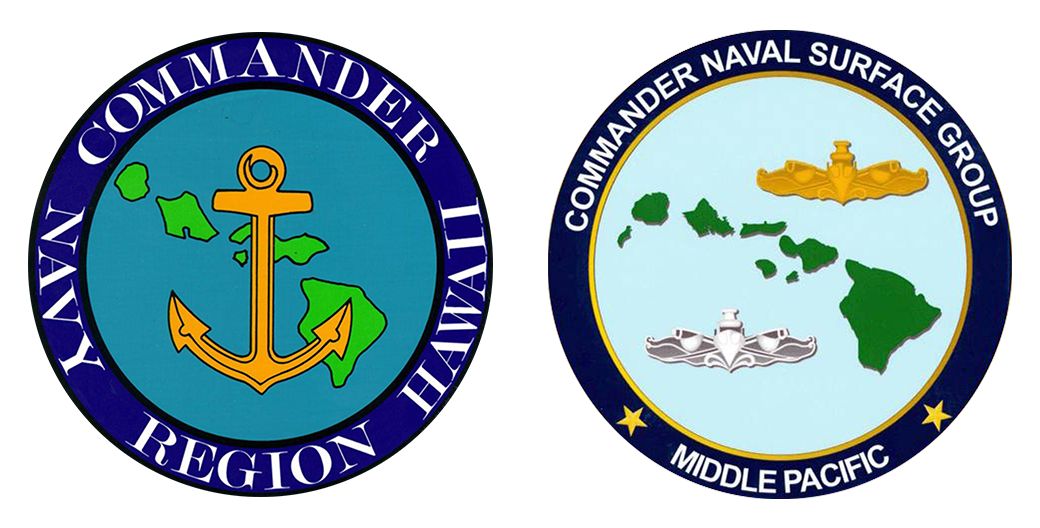
JOINT BASE PEARL HARBOR-HICKAM, Hawaii – The Navy is
working with the Hawaii Department of Health (DOH) to review the first
month of long-term-monitoring (LTM) drinking water sampling results at
Joint Base Pearl Harbor-Hickam (JBPHH) to ensure that water in the Navy
distribution system remains safe to drink.
Under an interagency-approved flushing and sampling plan, the Navy water
system is now in a two-year period of LTM. This includes testing about
6,000 more samples from roughly 55% of residences and other facilities on
the system for more than 60 different contaminants.
“Our actions are focused on the health and safety of our people and our
community – that is my highest priority,” said Rear Adm. Tim Kott,
commander, Navy Region Hawaii. “By conducting long-term monitoring
efforts, we are ensuring that our water remains safe. We have been able to
make great progress thanks to the collaboration and hard work with many
partners, and with the help of our community. We appreciate the continued
working relationship with the Hawaii Department of Health as we review
sampling results and act on any findings.”
Under the plan, the Navy is sampling 5% of homes and other buildings in
each zone of the Navy water system for the first three months after the
DOH amended that zone’s health advisory (a total of 15% in each zone after
three months). After that, 40% of all homes and other buildings on the
system will be sampled over the following 21 months. All schools, child
development, and medical centers will be sampled regularly during both
phases of the plan.
Sampling locations for homes in each zone are chosen as a geographic
representation of the zone, based on their location on the neighborhood
distribution system. Different homes will be chosen during each phase to
provide a good geographic spatial representation of homes sampled.
A Naval Facilities Engineering Systems Command (NAVFAC) Hawaii
representative contacts residents of homes selected for sampling to
schedule an appointment at the resident’s earliest convenience. The
sampling process takes about an hour.
When the sample team arrives at the home, they explain the long-term
monitoring process and answer any questions, then proceed to the sampling
faucet, typically the one highest and farthest from where water enters the
home. The sample team takes several field measurements to account for some
general conditions in the home. The team collects four one-liter bottles
for lab analysis on the mainland.
It typically takes two to three weeks for final results. All results are
validated to state and federal drinking water requirements, including the
incident-specific parameters (ISPs) set by the DOH for the Navy water
system.
Validated testing results will be posted to the Safe Waters website at:
https://jbphh-safewaters.org.
Sample results are generally categorized as non-detect, detect, or exceed.
If a sample exceeds action levels for contaminants, the resident or
building point of contact will be personally notified.
“This is a very large undertaking, and my staff and I remain committed to
conducting this effort in coordination with the DOH to ensure that we are
continually providing safe drinking water for all users of our water
system,” said Capt. Gordie Meyer, commanding officer of NAVFAC Hawaii. “We
will immediately act on any validated sampling exceedances, coordinating
with the DOH to determine the best course of action. We will continue to
meet the incident-specific parameters -- which are more health-protective
than drinking water regulated standard levels -- that are in place to
verify that the water in our system remains safe for all uses.”
“The added level of safety that these ISPs offer also means that we may be
working with our residents and tenants to conduct follow-up sampling and
remedial actions,” added Meyer. “I regret that this may cause some
additional disruption, but we are committed to doing this right and
restoring trust in the Navy water system from the Navy’s Waiawa well,
which is routinely monitored to ensure our water source and distribution
system is safely providing water to our consumers. We will continue to
work with regulators and our partners at the local, state, and federal
levels to ensure that water from the Navy water system remains safe for
all uses.”
For more information on these actions, go to the news section of
http://www.navy.mil/jointbasewater.
For more information on long-term monitoring of the Navy water system, go
to
https://jbphh-safewaters.org.